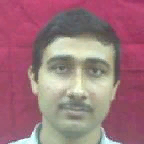
Paritosh Bhattacharya
Work place: Department of Mathematics, National Institute of Technology, Agartala, Barjala, Jirania, Tripura (West), Pin: 799046, India
E-mail: Pari76@rediffmail.com
Website:
Research Interests: Mathematical Analysis, Solid Modeling, Computer systems and computational processes, Computational Biology, Mathematical Software, Energy Engineering
Biography
P Bhattacharya received a Bsc. degree in Mathematics from Calcutta University,Kolkata ,India in 1997, Msc. degree in Mathematics from Visva Bharati, Shantiniketan,India in 1999. and his MTech and PhD degree in Mathematics from Jadavpur University, Kolkata, India in 2001 and 2010 respectively. He is currently Associate Professor at National Institute of Technology Agartala, India. His professional activities have been focused in Mathematical Modeling, Mathematical Biology and Renewable Engineering.
Author Articles
Edge Detection of Image Using Image Divergence and Downsampling Method
By Kishore Kumar Dhar Asish Mitra Paritosh Bhattacharya
DOI: https://doi.org/10.5815/ijem.2022.03.02, Pub. Date: 8 Jun. 2022
Classically, the points where digital image brightness transforms rapidly are ordered into a group of curved line segments termed as edges. Edge detection is an important feature and tool in digital image processing to analyze the significant changes in gray level image intensity. In this paper, an edge detection method is proposed. In the proposed method divergent operation is applied to the image to compute the Laplacian of the image. After then the sample rate of Laplacian of image is decreased by downsampling. A threshold value is yielded by computing the mean on the down sample value. Laplacian of image and threshold value is compared and pixel values are set according to the threshold value. Then the morphological operation is performed on the processed image to produce the final edge detection image. The significance and value of this research are reducing image noise by downsampling and searching vital edge information through divergence operation. The present study introduces a new method of edge detection. The finding of this research work is to detect the edges of objects. The proposed method is compared with other existing edge detection methods i.e., Canny, Sobel, Robert, Zero cross, and Frei-Chen. Quantitative evaluation is performed through various metrics i.e., Entropy, Edge-based contrast measure (EBCM), F-Measure, and Performance ratio. Experimental results obtained from MATLAB 2018a show that the proposed method performs better than other well-known edge detection methods.
[...] Read more.Other Articles
Subscribe to receive issue release notifications and newsletters from MECS Press journals